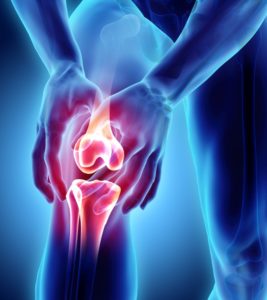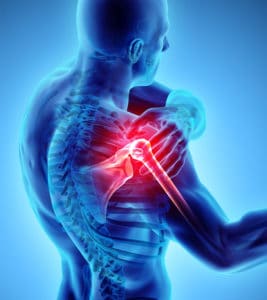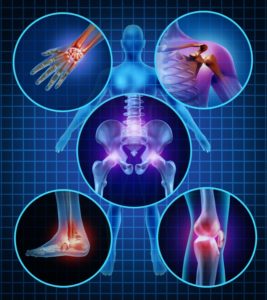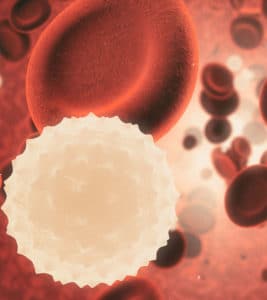Sprain Care
Wrist Sprain
A sprain is a common type of injury that involves a stretching or tearing of ligaments, the strong bands of tissue that connect bones to one another. A wrist sprain is often caused by falling onto an outstretched hand or by bending the wrist backward. Although anyone can sprain a wrist, athletes, including gymnasts, baseball and basketball players, skiers, skaters and skateboarders, are particularly susceptible. Protective splints or braces can offer some protection from injury for those at greatest risk.
Grades Of A Wrist Sprain
Wrist sprains are graded on a scale of one to three based on their severity and the extent of damage to the ligaments.
Grade 1
A grade 1 wrist sprain is mild, involving only a stretching of the ligaments involved. In grade 1 sprains, no tearing of ligaments takes place.
Grade 2
Grade 2 sprains are of moderate severity and involve a partial tearing of the ligaments. Patients with a Grade 2 sprain may suffer some dysfunction.
Grade 3
A grade 3 sprain is a significant injury in which the ligament is completely torn. Grade 3 sprains require immediate medical treatment and/or surgical repair. If, as the ligament tears away from the bone, it takes a chip of bone with it, the injury is known as an avulsion fracture.
Treatment may vary widely depending on the grade of the sprain. Some mild sprains may not require any medical intervention, but may heal on their own with home remedies.
Symptoms Of A Wrist Sprain
Depending on exact location and severity, the symptoms of a sprained wrist vary. Common symptoms include the following:
- Sensation of “popping” or “tearing” at time of injury
- Pain
- Swelling
- Bruising or discoloration
- Tenderness
- Warmth under the skin
- Limited mobility
To diagnose a wrist sprain, imaging tests may be necessary.
Diagnosis Of A Wrist Sprain
The location and intensity of the pain the patient experiences often helps the doctor diagnose a wrist sprain. By checking for specific points of tenderness, areas of swelling, and movements that make the pain more severe, the doctor may be able to pinpoint the affected ligament. In order to rule out a fracture, X-rays are usually taken. To diagnose the extent of the injury, an MRI scan may also be administered.
Treatment Of A Wrist Sprain
Many mild wrist sprains can be treated with rest, ice, compression and elevation (RICE). Taking nonsteroidal anti-inflammatory drugs (NSAIDs) can also help. For more serious wrist sprains, immobilization with a splint or cast may be prescribed. To repair a ligament that is completely torn (a Grade 3 sprain), surgery may be required. When a wrist sprain requires surgery, and sometimes even when it does not, physical rehabilitation may be necessary to restore ease of function, range of motion, and strength to the wrist.
Foot Sprains And Strains
Both foot sprains and foot strains are very common injuries, occurring as a result of sports accidents, falls, or other traumas. The difference between the two types of injuries is that sprains affect the ligaments, the thick strands of cartilage attaching one bone to another, and strains affect the muscles or the tendons, thick bands attaching muscle to bone. In both cases, the patient with the injury usually experiences pain (particularly upon movement), swelling, tenderness, bruising, weakness or muscle spasms. Foot sprains, the more serious injury, may also cause possible instability of the joint, most frequently the ankle. Depending on where on the foot the injury occurs, patients may be unable to bear weight until healing takes place.
Causes Of Foot Sprains And Strains
Typically, foot sprains occur in the ankle or midfoot as an abnormal twisting during an athletic event or accident. When a sprain occurs in the big toe, rather than midfoot, it is referred to as turf toe. This injury is the result of an awkward twisting or hyperextension of the affected appendage. Foot strains, on the other hand, happen as the result of a sudden tear or pull of the affected muscle, usually because of overstretching or over contraction.
Diagnosis Of Foot Sprains And Strains
Foot sprains and strains are routinely diagnosed through physical examination of the patient and an evaluation of the circumstances of the injury as well as its resulting symptoms. X-rays may also be taken to confirm the diagnosis and to rule out other problems, such as bone fractures. When diagnosed, both sprains and strains are graded as I, II or III, depending on severity of injury, pain level and lack of function. For both sprains and strains, the categories are designated mild, moderate and severe.
Treatment Of Foot Sprains And Strains
Mild foot sprains and strains can normally be successfully treated through the usual remedies of rest, ice, compression and elevation (RICE). Over-the-counter anti-inflammatory medication is typically administered to reduce swelling and alleviate pain. In some circumstances, mild stretching exercises may be helpful.
While severe sprains may require complete immobilization with a cast, with lesser sprains and strains the patient may be able to walk with a bandage or brace, aided by a cane, or may not require any assistance. Most patients heal gradually from mild or moderate sprains in approximately 2 to 8 weeks, depending on the severity of the injury.
In the case of severe sprains or strains, a surgical repair may be necessary, in which case the recovery period may stretch to 3 months. After immobilization for a lesser injury or after surgery for a more severe one, a period of physical rehabilitation is necessary.
Ankle Strain
An ankle strain is an injury to a muscle or tendon in the ankle. An ankle strain is a common injury that occurs when the ankle muscle is stretched or torn. A strain is caused by twisting or pulling of the muscle or tendon and may be caused by playing sports, lifting heavy objects or an injury that causes the foot and ankle to twist inward.
Symptoms of an ankle strain may include pain, muscle spasms, swelling and bruising. The affected ankle is often difficult to move, making it difficult to walk and put pressure on the foot. An ankle strain may be diagnosed through a physical examination and X-rays may be performed to rule out the possibility of a fracture or dislocation. Most ankle strains can be treated through conservative methods such as:
- Resting the ankle
- Applying ice
- Using compression bandages
- Elevating the ankle
- Taking anti-inflammatory medication
- Going to physical therapy
Ankle strains usually heal within 2 to 6 weeks, and most individuals can resume physical activity at this time. Surgery is not usually required to treat an ankle strain. Taping or bracing can help protect the ankle after injury and also helps prevent future injuries from occurring. It is important to take extra precautions after an ankle injury, as some patients may be susceptible to recurring injuries.













